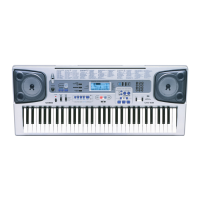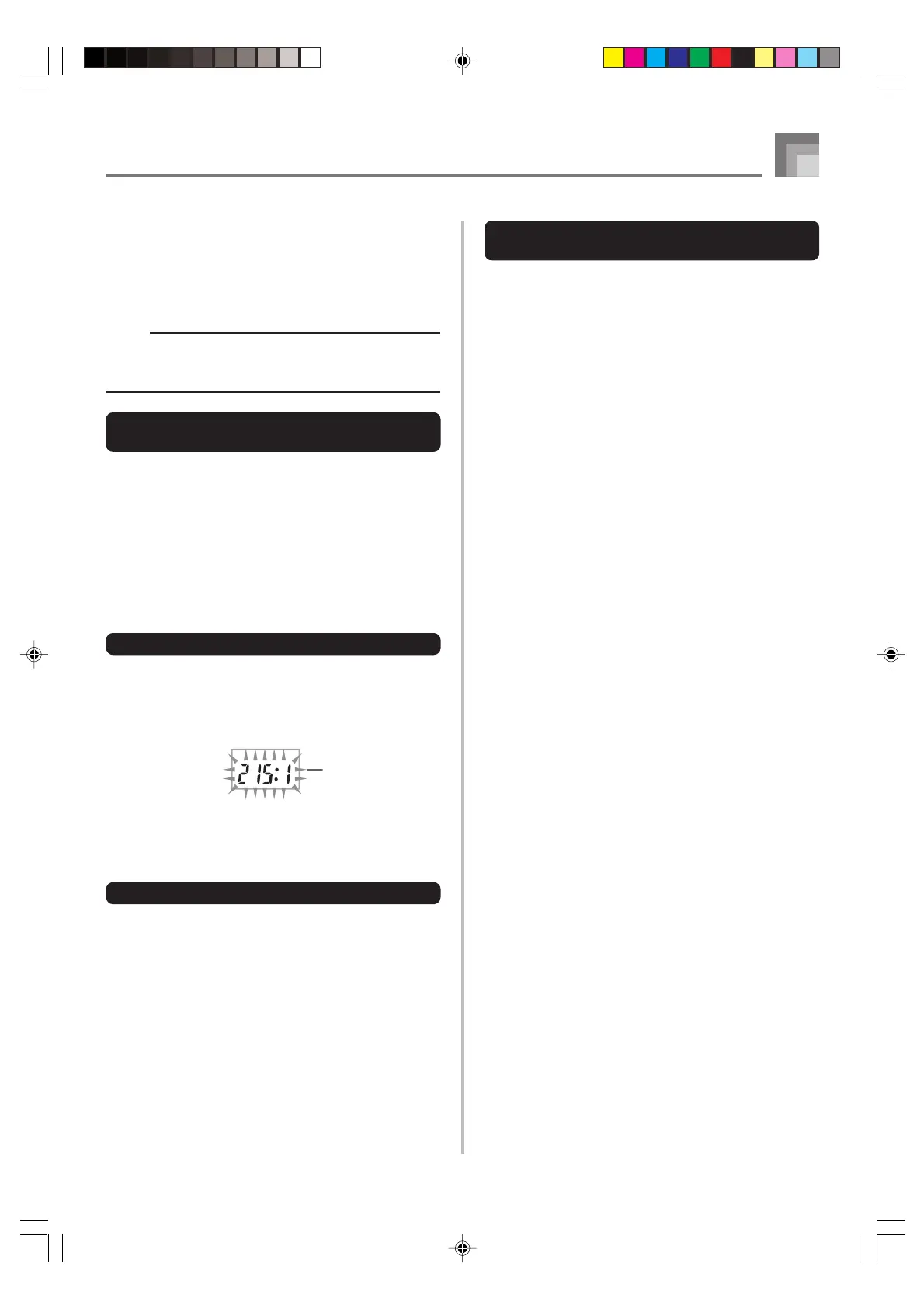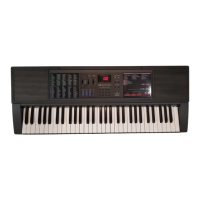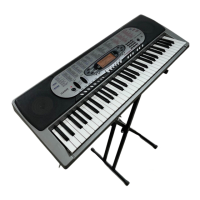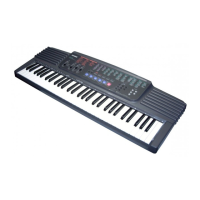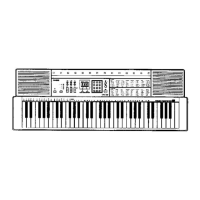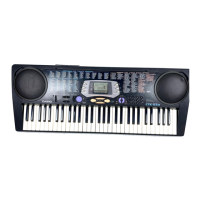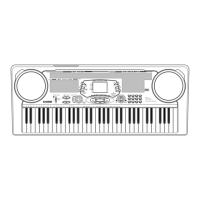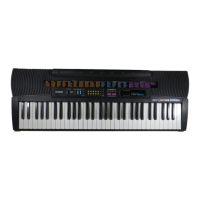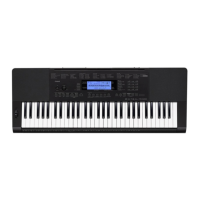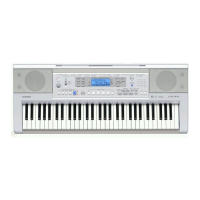E-43
7
Press the START/STOP button to end recording
when you are finished playing.
• If you make a mistake while recording, stop the record
operation and begin over again from step 1.
NOTE
• Using real-time recording to record to a track that already
contains recorded data replaces the existing recording
with the new one.
Track 1 Contents After Real-time
Recording
In addition to keyboard notes and accompaniment chords,
the following data is also recorded to Track 1 during real-
time recording. This data is used whenever Track 1 is played
back.
• Tone number
• Rhythm number
• INTRO, SYNCHRO/ENDING, NORMAL/FILL-IN,
VARIATION/FILL-IN button operations
• Pedal operations
Memory Capacity
The keyboard has memory for approximately 5,100 notes. You
can use all 5,100 notes for a single song, or you can divide
memory between two different songs.
• The measure number and note number flash on the display
whenever remaining memory is less than 100 notes.
• Recording automatically stops (and Auto Accompaniment
and rhythm stops playing if they are being used) whenever
memory becomes full.
Memory Data Storage
• Anything previously stored in song memory is replaced
whenever you make a new recording.
• Memory contents are retained as long as the keyboard is
supplied with electrical power. Unplugging the AC adaptor
when batteries are not loaded or when loaded batteries are
dead cuts off the keyboard’s electrical power supply,
causing all data stored in song memory to be deleted. Be
sure to plug the keyboard into an electrical outlet with the
AC adaptor before replacing batteries.
• Turning off the keyboard while a record operation is in
progress causes the contents of the track you are currently
recording to be lost.
Flash
Track 1 Real-time Recording
Variations
The following describes a number of different variations you
can use when recording to Track 1 using real-time recording.
All of these variations are based upon the procedure described
under “To record to Track 1 using real-time recording” on
page E-42.
To record without rhythm
Skip step 5. Real-time recording without rhythm starts when
you press a keyboard key.
To start recording with synchro start
In place of step 5, press the SYNCHRO/ENDING button.
Auto Accompaniment and recording will both start when you
play a chord on the accompaniment keyboard.
To record using an intro, ending, or fill-in
During recording, the INTRO, SYNCHRO/ENDING,
NORMAL/FILL-IN, and VARIATION/FILL-IN buttons
(pages E-38 through E-40) can all be used as they normally
are.
To synchro start Auto Accompaniment with an intro
pattern
In place of step 5, press the SYNCHRO/ENDING button and
then the INTRO button. Auto Accompaniment will start with
the intro pattern when you play a chord on the
accompaniment keyboard.
To start Auto Accompaniment part way into a recording
In place of step 5, press the SYNCHRO/ENDING button and
then play something on the melody keyboard to start. When
you reach the point where you want Auto Accompaniment
to start, play a chord on the accompaniment keyboard.
Song Memory Function
704A-E-045A
CTK591_e_41-45.p65 03.10.7, 4:27 PM43
